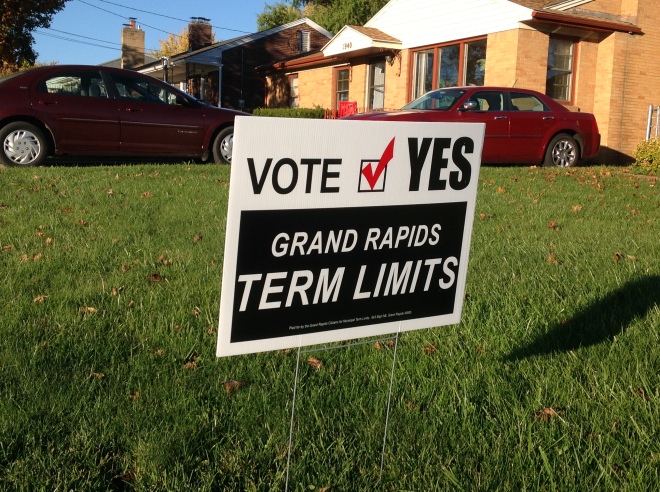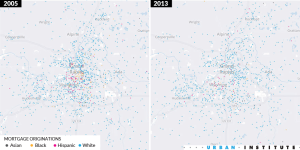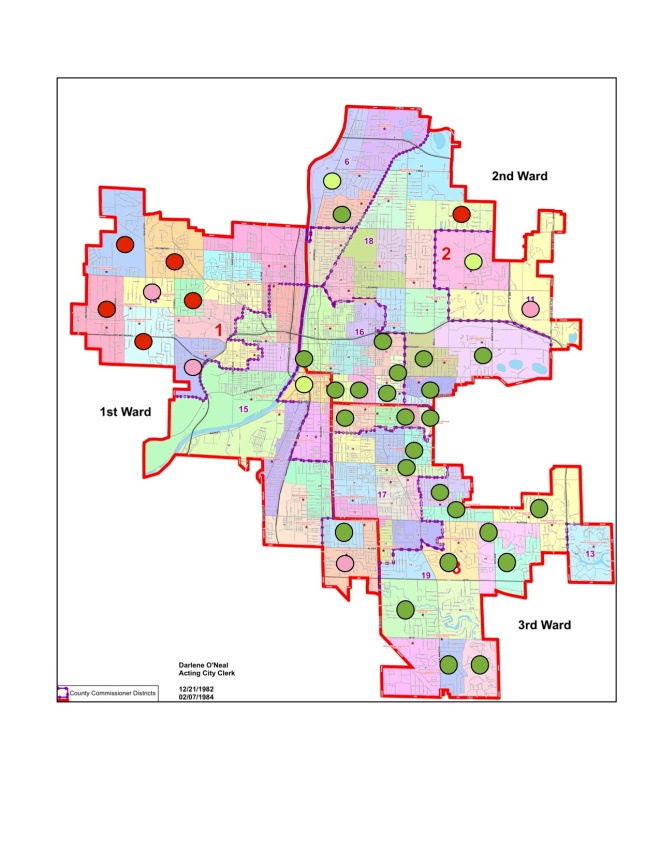 For politicos, the above map will look rather familiar. Support for the Term Limits amendment is in red and right where you would expect it: up on the hill on the west side, and out one the NE rim. These have been reliably conservative votes for some time, and especially on the more populist measures like term limits. On the SE side, the continuing impact of the Dutch community can be seen. This pattern of balance between the far SE and the west side can also be found on taxation issues such as the Silver Line or way before, on school millages.
For politicos, the above map will look rather familiar. Support for the Term Limits amendment is in red and right where you would expect it: up on the hill on the west side, and out one the NE rim. These have been reliably conservative votes for some time, and especially on the more populist measures like term limits. On the SE side, the continuing impact of the Dutch community can be seen. This pattern of balance between the far SE and the west side can also be found on taxation issues such as the Silver Line or way before, on school millages.
The SE side vote serves as a reminder that the populist, libertarian stance so popular today is not the only one available to the conservative. The precincts out Burton can be painfully conservative, but they nonetheless vote for institutions. This lies less in a hidden heart of softness, than in the character of their theology and social class. Like their neighbors to the north in East Grand Rapids or in Ottawa Hills (historically a “Yankee” not a Dutch neighborhood) the population out Burton is one that prizes education; the residents are professionals and white collar, often in management or in education. Underneath this, there is also the element of the Dutch Reformed social philosophy, “Kuyperianism” that seeks to bring belief to transform society. Think of it as social conservatism with brains.
So this is story one: the Term Limits proposal pits the conservative populists concentrated on the west side against the socially moderate SE side. For a long time in Grand Rapids history, this has been THE battle. But the map of course shows another segment for the opposition: the “hipsters” (as commentators on MLive have it) — a band of neighborhoods stretching out Fulton from Downtown out Marywood and the city limits, a region usually defined by its zip code: 49503. In contrast to the Dutch, these are largely Yankee: middle class of varying religious persuasion, largely white. This has been the part of town that has provided some of the strongest leadership in the urban revitalization, and for that matter, the City; it is the backbone of the political culture of the Second Ward (although the Ward is far more diverse than this).
In most seasons, the alliance between Second and Third Wards is enough to stop the occasional populist outbreaks on the West Side. Not this time. What happened?
Map Two: the Blue Collar Revolt
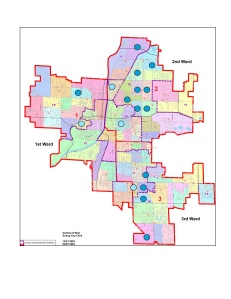
Earlier, I had posited a blue collar antipathy to the Big City: term limits were part of a struggle for the urban guidance of the city. The data above is pretty clear. The neighborhoods of the northside by Aberdeen, or on the SE side towards Alger Park (the blue collar part of the SE side Dutch community) — they were pretty adamant about the term limits voting in a range of 54%-60% in favor.
The distinct geographic clumping adds another layer to the story. These are not so much the disaffected as they are the invested. Their neighborhoods have not seen the downtown love, so to speak. These are also the neighborhoods with relatively less spending income: first home buyers, long time residents. What we see is something like a map of (potential) revolt. Oddly, the passage of term limits may actually help reconnect this group, provided they get representation.
A third map, however reveals the mistakes of the opponents. Painfully so.
Map Three: the Disconnected Poor
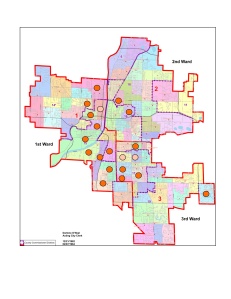
Above are the low-turnout precincts, again with the darker dots indicating strong support for term limits (approx. 54%-65% in favor), the lighter dots represent those low turnout precincts that slightly favored the measure. We can consider low turnout as a proxy for poverty — a position any one familiar with these neighborhoods already understands.
Again, the geography tells everything. These are the Hispanic and African-American districts, the same ones that were skeptical in the Lenear/Tuffelmire battle.These are neighborhoods of the working poor — low turnout is strongly correlated with poverty. In civic discussions, they are also the community that is acted upon, rather than takes part (as an aside, one might read the election of Jose Flores to the school board as part of this same dynamic, a pushing back as it were).
Looking to the numbers, this was the part of the electorate where the measure won. The two thirds of higher-turnout precincts basically broke even. So although this cluster of precincts represents perhaps 20 % of the total vote, the 900 vote margin provides the win.
In short….
When considered through the lens of the usual politics, or even of the Blue Collar Revolt, the battle over term limits looks manageable. It is the failure to make the case with the working poor that really stands out. This may have arisen from unconscious bias (i.e. communicating as if your viewpoint is normative, leaving off the connecting with the audience). It could have been that the argument was too abstract relative to the proponents. It may well be something else.
Here’s one thing that advocates of the City need to take to heart: the big measures will take buy-in from the near neighborhoods. They are our neighbors and often our friends. Advocates ignore them at their own risk.
And for purposes of vote counting, these districts represent the winning margin for Term Limits
Filed under: Community, Elections, African-American, Big City, Dutch, Hispanic, Mike Tuffelmire, Poverty, Senita Lenear, term-limits, Urban
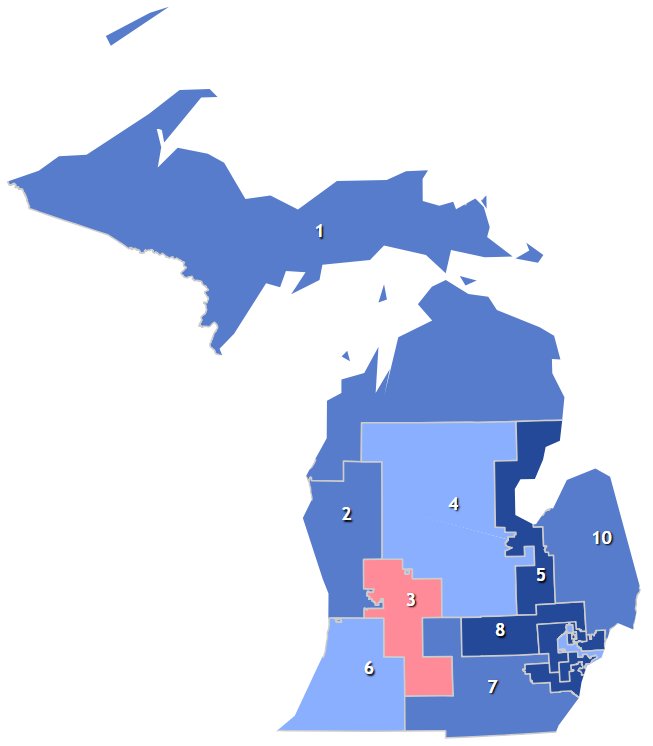





 There’s a voice coming from the political closet: Michigan’s moderate Republicans. To hear what it’s saying (and understand the problems of Michigan’s GOP) look no further than
There’s a voice coming from the political closet: Michigan’s moderate Republicans. To hear what it’s saying (and understand the problems of Michigan’s GOP) look no further than 